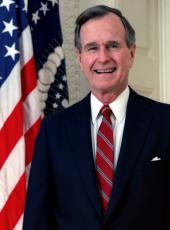The President's Proposal
A 27-percent increase in the minimum wage over 3 years to $4.25 for most workers.
Maintaining the current $3.35 minimum for all new employees of a firm on the job for less than 6 months, regardless of age or previous employment.
An increase in the small business exemption to include all firms, not just retail and service establishments, with gross sales under $500,000, up from the current $362,500.
An increase in the tip credit from 40 percent to 50 percent.
Fundamental Principles Guiding the President's Proposal
Provide higher earnings for long-term minimum-wage employees.
Minimize the adverse economic impact of an across-the-board increase in the minimum wage.
Maximize job opportunities for those who need it most, particularly young people, those with limited work experience or skills, and members of minority groups.
Provide sensible exemptions to minimize the burden of the minimum wage on small businesses and on service firms, where tips are an important part of compensation.
Why Not Increase the Minimum Wage to $4.65?
To Save Jobs. An increase in the minimum wage to $4.65 would cost 650,000 job opportunities.
The President's proposal would save well over 400,000 of these job opportunities. The smaller increase, to $4.25, saves 200,000 job opportunities. The training wage saves up to an additional 170,000 job opportunities. The tip credit and small business changes save 54,000 job opportunities.
What Other Economic Effects Would Result From a $4.65 Minimum Wage?
The 40-cent increase between $4.25 and $4.65 would mean a $0.6 billion increase in the Federal deficit.
The 40-cent increase between $4.25 and $4.65 would increase costs to the consumer by $6.5 billion.
Chairman Greenspan of the Federal Reserve has stated that raising the minimum wage would make the battle against inflation more difficult. A higher minimum wage could result in higher interest rates.
A higher minimum wage would raise production costs, thus reducing the competitiveness of American manufacturers in international markets.
A higher minimum wage would have an additional effect on employment costs, as many fringe benefits costs are tied to wages.
Why Have a 6-Month Training Wage?
To Save Jobs. Under the President's proposal, the 6-month training wage could save 170,000 job opportunities.
A 3-month training wage would save only half as many job opportunities.
An increase in the minimum wage without an adequate training-wage provision means that many potential workers will have much greater difficulty getting their feet on the ladder of economic opportunity. Employers would be discouraged from creating new jobs at a higher wage for inexperienced workers.
Those hurt the most without a training wage are the poor, many of whom are young, and minorities.
Why Not Have the Training Wage Apply Only to a Worker's First Job Instead of Each New Job?
To Save Jobs. A new-hire training wage, such as the President proposed, could save four times as many job opportunities as would a first-job training wage: 170,000 vs. 40,000.
New jobs require new skills. Someone who may have spent a few months on a different job may need time to learn new skills.
Why Not Limit the Training Wage to Teenagers?
To Save Jobs. Many new workers, including people trying to escape from welfare, are in their twenties or older.
The President's universal approach is administratively simpler and less likely to foster compliance problems.
Won't An Even Higher Minimum Wage Help Cure Poverty?
The minimum-wage population and the poverty population are composed largely of different people. Sixty percent of those earning the minimum wage are young people. Sixty-six percent work part time. Seventy-two percent are single.
Only 336,000 heads of households living in poverty earned the minimum wage. That is less than 2 percent of the working-age poverty population.
The job opportunity losses from a universal $4.65 minimum wage may actually increase poverty by denying jobs to members of families living in poverty. Poor families would also be forced to pay the higher consumer and other costs associated with a higher minimum wage.
Won't a Higher Minimum Wage Increase Job Opportunities and Wages?
Since 1982, with no increase in the minimum wage, the economy has added more than 19 million jobs. Yet the number of minimum-wage jobs has declined by 2.6 million, or 40 percent.
In the last 7 years, 18.4 million jobs (an increase of 80 percent) paying more than $10 per hour have been added. Five million jobs paying between $5 and $10 have been added. The number of jobs paying less than $5 per hour has declined by 30 percent.
With a constant minimum wage, the unemployment rate has been reduced to 5.1 percent, the lowest in 15 years.
A higher minimum wage hurts small business the most. These firms are the key to future employment growth and opportunity for the economy. United
George Bush, White House Fact Sheet on the President's Minimum-Wage Proposal Online by Gerhard Peters and John T. Woolley, The American Presidency Project https://www.presidency.ucsb.edu/node/247623

